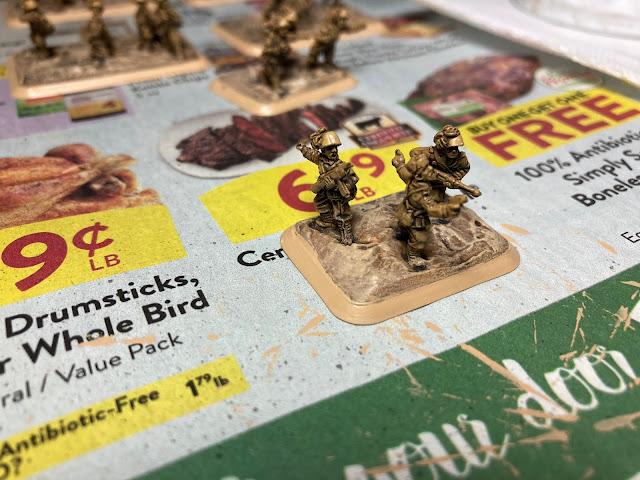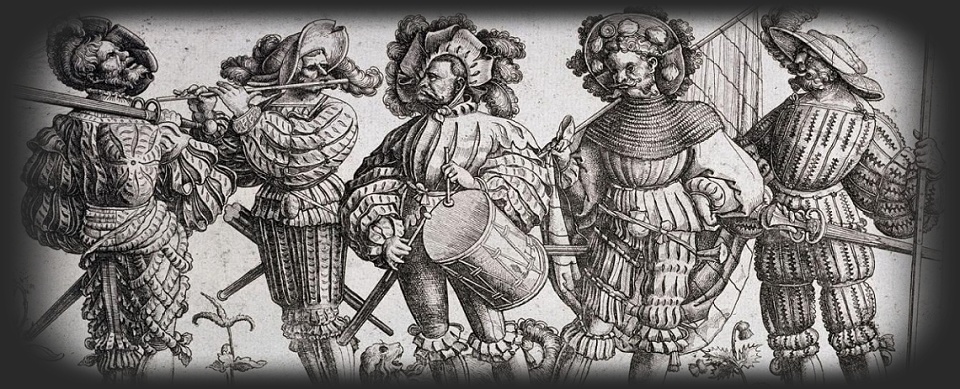Italian forces of WW2 are one of my favorite projects to work on for a variety of reasons. From a historical perspective, Italy often goes under-analyzed in comparison to the contemporary forces of the USA, the UK, the USSR, and Germany. As a result, there is a largely overall impression that Italy was sort of... lacking in its involvement in the conflict (to put it nicely). To be completely fair, Italy was not at all prepared to take part in a global conflict in the 1930's and 40's. The nation was largely agrarian with a small industrial base, unable to keep up with the production of all the other major powers in Europe. On top of this, there are many examples of high level, strategic and operational blunders by the Italian military during this time period (looking at you Operation Compass and Italy's ill-fated invasion of Greece). This has created a narrative that the Italian soldier was unskilled, unmotivated, undersupplied, and poorly led.
Despite this, there are plenty of counter-examples where Italian soldiers out-performed many of their peers. Many of the more elite Italian forces were well motivated and occasionally fought to the last man (such as the Italian paratroopers during the first and second battles of El Alamein). Field Marshall Erwin Rommel is even quoted as saying "The German soldier has astonished the world; the Italian Bersagliere has astonished the German soldier."
From a gameplay and modeling perspective, this gives me the chance to build a force of plucky, well motivated, but often not-so-well equipped forces who at times feel as though they are fighting against the odds when facing off against the other major players in WW2. They also have plenty of fun, interesting, and at times hilariously poorly thought out equipment to learn about while building your force (including the neat Brixia assault mortar, the cute L6/40, and the horribly unreliable Breda 30 LMG)
For painting my Italians, I largely follow the color guide found in a nice Battlefront article that gives a good outline on how to paint basic uniforms in North Africa and Europe as well as gives some good advice to add some variety into the uniforms if you get tired of painting the same thing over and over.
 |
| Bersaglieri Rifle and LMG teams |
 |
Bersaglieri weapon teams. Pictured here are Breda HMG teams, 81mm mortars, and Brixia assault mortars.
|
These models are the 15mm Italian Bersaglieri infantry produced by Battlefront miniatures for Flames of War. In general I think the kits produced by Battlefront are solid, though you will hear a lot of varying opinions about some of their newer thermoplastic kits. These are older metal models that were produced before Battlefront made the commitment to start producing almost every new kit in plastic or thermoplastic. In general the heft is sort of nice, but your mileage may vary when it comes to cleaning up metal models and as a general rule, the metal kits are more expensive as well. Details are nice and chunky without a ton of over-modeled detail.
First thing I do is apply some drywall spackle onto the base to cover up the individual model bases and recess in the bases that they were placed in. This is then followed by a basecoat/primer of Army Painter Desert Yellow spray. Feasibly you could use any sandy colored spray paint for this and the great thing is it makes a good base color to start from for the uniform, flesh tone, and most of the kit. After this basecoat, I wash all the models and the bases using a Games Workshop Nuln Oil wash.
 |
| After basing, prime and wash |
Next I drybrush the base with Vallejo US Tan Earth and then Vallejo Iraqi Sand, followed by cleaning up the edge of the base also with coats of Iraqi Sand. Some people leave this step to the end but I like the look of the cleaned up base while I am working on the model. On the models themselves, I paint the helmets and any metal equipment (such as mortar tubes for the support weapons) Vallejo Green Ochre.
 |
| Helmets painted, basing drybrushed |
My next step included painting the flesh tone with Vallejo Flat Flesh, the boots Flat Brown, and the puttees German Camo Dark Green. Keep in mind, the key here is to leave the recesses of the model still dark from the prime/wash step that was done before painting the model.
 |
| Skin tone done, boots and puttees painted |
Next I paint the exposed parts of the uniform using Vallejo Desert Yellow, and the fancy feathers on the helmets (how appropriately Italian!) using Dark Grey.
 |
| Uniform painted Desert Yellow, feathers painted Dark Grey |
Finally, I paint the wood parts of the weapons using Vallejo Beige Brown and the weapon furnishings with Vallejo Natural Steel. For the Beretta SMG carried by the NCO, I actually first paint the metal parts of the gun Dark Grey followed by a highlight of natural steel. You could probably do this for all metal parts of all the weapons, if you wanted to.
The webbing and equipment is painted in an old Battlefront Colors of War paint color "Afrika Green" I still had on hand before they discontinued it years ago. You could substitute this with Vallejo Yellow Green, which is probably easier to find these days.
 |
| Weapons and furnishings painted, webbing and kit painted |
 |
| A completed Bersaglieri Rifle platoon |
Of course the very last step is to just add some tufts of grass to replicate the look of sparse vegetation on the battlefields of Egypt, Libya, or Tunisia. Here I used Gale Force 9's Arid Static Grass, with some GF9 Green Static Grass stuck inside some of the larger tufts of the arid grass.
 |
| Finished assault mortars |
And that's it! Fairly simple paint job with maybe a dozen colors involved. I find the key here really lies in the pre-wash I do before painting the colors of the model as the depth adds a ton to making the model look nice on the tabletop. It takes a bit of patience to go back in and block in all the colors, but many of these go on after 1 or 2 coats at most and comes along fairly quickly with some practice.
 |
| Completed weapons teams |
All in all, this took me only a few hours, drying times not included. The uniform is pretty simple and things go relatively quickly. After all the time I have spent over the years painting dark greens and grays for the ETO forces, getting to paint these lighter tropical uniforms was a welcome change of pace.

































